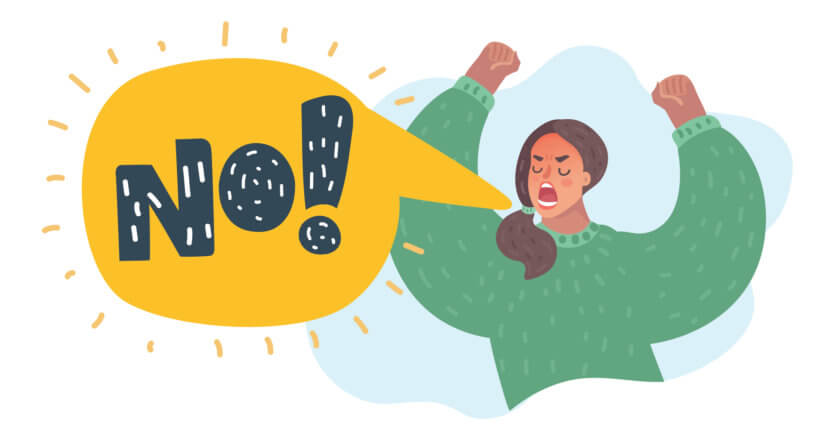
A Brief History of Roe v. Wade
Last night, as I finished watching an episode of “The Dropout”, I received a text from a dear friend with whom I’m planning on spending the weekend. I thought it would be about what we plan on wearing to her friends’ wedding, or where we should meet once my plane lands. But instead it was this: “So excited to see you especially after this sh*t fu*king news.” My friend is an abortion advocate, and fierce defender of women’s reproductive rights — someone who plans marches, and creates flash mobs in Washington. I knew that if I looked at the news it wasn’t going to be good. And that it would have nothing to do with our trip, or the Met Gala — the other news item that had been grabbing headlines last night.
And there it was, splashed across the New York Times website: “Supreme Court has voted to overturn abortion rights, draft opinion shows.” My heart did double flips in my chest. I’m the founder of Not Safe For Mom Group — a community where moms can talk about all taboo topics without fear of judgment — as well as a co-founder of Chamber of Mothers — whose mission is to unite mothers as advocates to create a better America for future generations. I know how this news is going to hit our already exhausted communities. This news will have lasting implications on the women in our country, particularly Black women and women of color. Tens of millions of women could soon be stripped of the constitutional rights they’ve held true for half a century.
But before getting too in the weeds, or defeated to the point that we lose the stamina to fight the systems that seem hellbent on controlling women and their bodies, let’s take a beat. Exactly what does this mean, and how did we get here?
QUICK RECAP: WHAT IS Roe v. Wade?
On January 23rd, 1973, the Supreme Court ruled that under the 14th Amendment, a state law that banned abortions except to save the life of a mother, was unconstitutional. This also meant that individual state laws could no longer ban abortions.
WHERE DID Roe v. Wade ORIGINATE FROM?
IN 1969, a woman named Norma L. McCorvey found out she was pregnant with her third child, and wanted to have an abortion. But at the time, the law in Texas only allowed abortions only in pregnancies that were a result of rape or incest, or if the abortion would save a mother’s life. McCorvey’s case did not fall under any of these provisions. She attempted to have an illegal abortion, but the recommended clinic had been shut down by the authorities.
A local attorney helped her begin the adoption process for her pregnancy, and put her in touch with two other lawyers. Those lawyers (Linda Coffee and Sarah Wedington) brought a lawsuit on behalf of McCorvey (under the name “Jane Roe”) against Henry Wade, who was the district attorney of Texas at the time. The lawsuit argued that the state’s law were a violation of Roe’s constitutional rights, alleging that the laws were constitutionally vague and truncated her right of personal privacy, drawing on the First, Fourth, Ninth, and Fourteenth Amendments. In 1970, a Texas district court ruled that the state’s abortion ban was illegal.
The case eventually was appealed in the Supreme Court. In 1973, the court issued a landmark 7-to-2 decision, effectively legalizing abortion nationwide. The court declared that a woman could decide to end a pregnancy within the first trimester, but in the second trimester the government could regulate abortion (although could not ban it) in order to protect the mother’s health. In the third trimester, the state could prohibit abortion to protect the fetus, except when a woman’s health was at risk.
WHAT HAPPENED AFTER Roe v. Wade?
The Roe v. Wade decision had remained one of the most contentious, polarizing decisions in our society.
In 1971, the year after abortion was decriminalized, the maternal mortality rate in New York State dropped 45 percent.
The Pennsylvania Abortion Control Act of 1982 added some provisions to the Roe v. Wade ruling. Women would be required to give “informed consent” before abortions were performed, and a 24-hour waiting period was imposed for women seeking abortions. In that time period, women would be provided information about abortions. In 1992’s Planned Parenthood v Casey, Roe v. Wade was reaffirmed, but allowed for some restrictions.
As the The Atlantic observed, as history has marched on, The Supreme Court has allowed states to continue to erect barriers to abortion — “denial of public funds for poor women’s abortions, parental consent, and notification requirements, mandatory delays, and counseling sessions.”
Just recently, Oklahoma passed several bills, one of which would make it a felony to perform an abortion without exceptions for rape, or incest — only to save the life of the mother.
WHAT HAPPENED LAST NIGHT?
Politico obtained a draft of a majority opinion written by Justice Samuel Alito that would strike down Roe v. Wade. This could potentially result in Roe v. Wade’s decision being overturned, ending the federal constitutional right to an abortion. According to The Wall Street Journal, this first draft declares that Roe was “egregiously wrong and deeply damaging,” and that “Planned Parenthood v. Casey, a decision which limited but didn’t eliminate abortion rights, prolonged the court’s error.” In the draft, according to Politico, Alito writes that Roe must be overturned because “the Constitution makes no reference to abortion, and no such right is implicitly protected by any constitutional provision.”
The draft’s opinion was labeled “the opinion of the court”, which implies that a majority of justices are aligned with it. It goes on to say that they are overruling these decisions to return the authority to “the people and their elected representatives”.
This type of breach has never occurred before.
SO WHAT DOES THIS MEAN NOW?
If Roe is overruled, it would lead to abortion bans in roughly half the states and could have ramifications for this upcoming election. It would allow individual states to regulate abortions more heavily, or ban the procedure altogether.
WHY SHOULD EVERYONE (NOT JUST WOMEN) BE CONCERNED?
This leak implies that the war on women is full steam ahead. In a country that provides zero support for women’s working rights (hello LACK OF PAID LEAVE), where mental health care remains inaccessible and fraught with inequality, and where affordable childcare remains a pipe dream — it is ludicrous to force women to bring life into a world where the needs of that life (and their own) will be greatly underserved.
And this will continue to put the vulnerable among us into dangerous, or life-threatening situations. The wealthy (and especially white) women of America will continue to travel to states that do not yet ban abortion while underserved populations who cannot afford the journey will suffer.
If Roe is overturned, we will not be living in the kind of America we want to bestow to future generations.This ruling could potentially pose a threat to other decisions, such as the right to same-sex marriage, and what little protections exist for minority and marginalized communities.
SHOULD WE JUST GIVE UP RIGHT NOW?
Don’t throw up your hands in despair…yet. The draft opinion is, just that, a draft. A final opinion has not been issued. But we DO need to activate. That means: putting pressure on Congress, by flooding your congress person’s Inbox and telling POTUS they need to do better, and protect abortion. It means voting in the midterms to make sure your votes go in support of abortion access and donating to abortion funds (especially in Red states) . It means being ready to march, and protest (if you’re in New York City, there’s a rally in Foley Square at 5:00pm. Wear green.) Stay informed.
In the meantime, I am rage texting with friends while staying on top of the latest headlines on this. Today is a historical day, and hopefully one that will be overwritten.





















